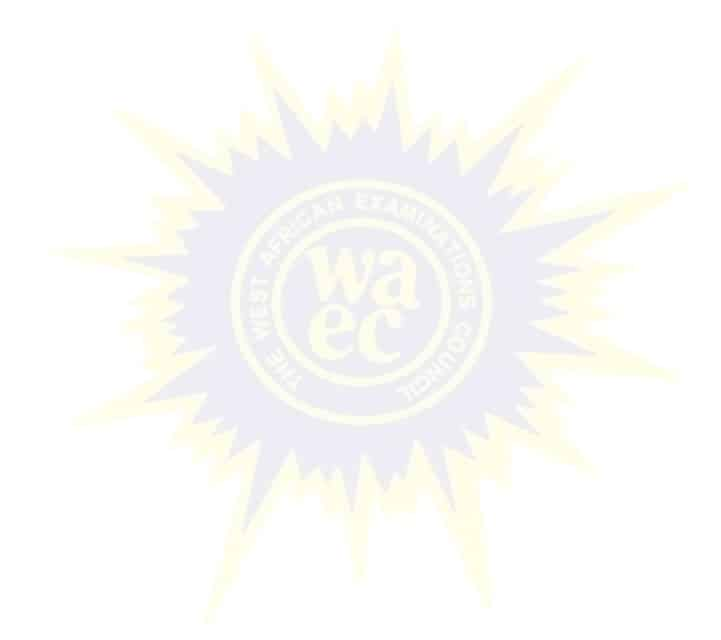
Economics
Paper 1 | Objectives | 37 Questions
WASSCE/WAEC MAY/JUNE
Year: 1988
Level: SHS
Time:
Type: Question Paper
Answers provided
FREE
No description provided
Feedbacks
This paper is yet to be rated

Paper 1 | Objectives | 37 Questions
WASSCE/WAEC MAY/JUNE
Year: 1988
Level: SHS
Time:
Type: Question Paper
Answers provided
No description provided
This paper is yet to be rated
8 Tips To Be More Productive in Test Revision for good grades and higher performance in exams
Past questions are effective for revisions for all tests including WAEC, BECE, SAT, TOEFL, GCSE, IELTS
Adequate preparation and effective revision strategies tips to get a high score 320 in JAMB in 2022
| # | Question | Ans |
|---|---|---|
| 1. |
'Economics is a science which studies human behaviours as a relationship between ends and scarce means which have alternative uses. 'Ends' her refers to A. resource B. wants C. choice D. output E. factors
Show Content
Detailed SolutionOne of the many definitions of Economics states “Economics is a science that studies the human behaviour as a relation between unlimited ends and the limited means.Ends = the human needs/wants. Means = resources. |
|
| 2. |
A review of occupational distribution of population from time to time helps us to know the A. rate of which the population grows B. number of people that makes up the labour force C. efficiency of the working population D. industries which are becoming less important E. number of people that are bot employed |
B |
| 3. |
The price of a commodity is determined by the A. supplier B. consumer C. quantity of goods demanded D. quantity of goods supplied E. interaction of demand and supply |
E |
| 4. |
The equilibrium position of a firm is attained A. when MC = AR B. when MC = PC C. when MC = MR D. when AC = AR E. when AR = MR |
C |
| 5. |
In any economic system , which of the following is not an economic problem? A. what goods and services to produce B. for whom to produce goods or services C. what techniques of production to be adopted D. equal distribution of goods and services E. how to ensure that the economy grow over time |
D |
| 6. |
In which of the following economics system is the consumer referred to as ‘The King’? A. Planned economy B. Mixed economy C. Traditional economy D. Free Market economy E. Socialist economy |
D |
| 7. |
Into which of these organization would you classify the International Monetary Fund (IMF) ? A. Political organization B. Trade organization C. Financial organization D. Social organization E. Commercial organization |
C |
| 8. |
A normal demand curve is A. Is concave to the point of origin B. Is convex to the point of origin C. Is parallel to X axis D. Is parallel to Y axis E. Slopes upwards from left to right |
B |
Preview displays only 8 out of the 37 Questions